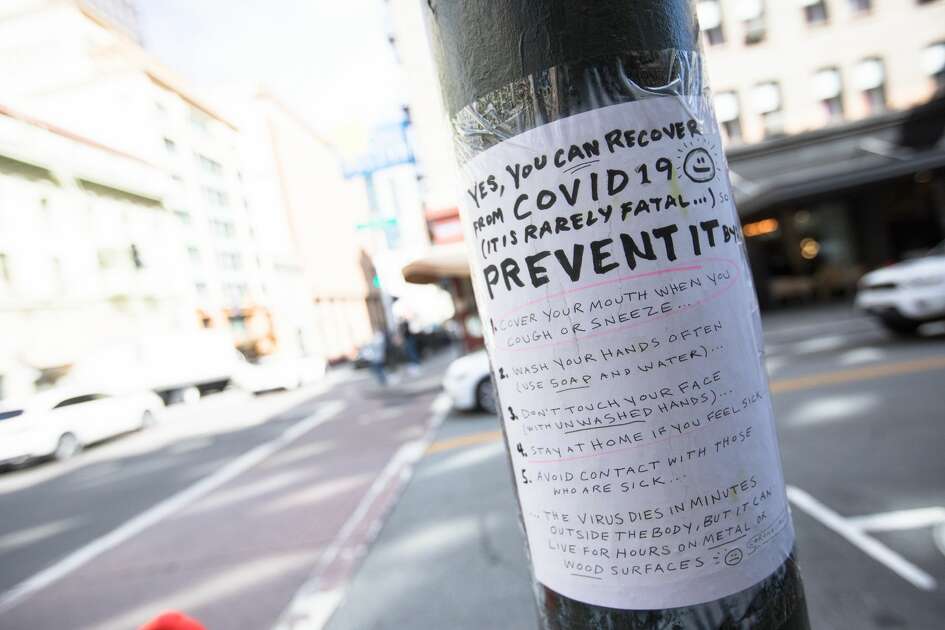For more coverage, visit our complete coronavirus section here.
If you're showing signs of illness — a cough, runny nose and fever — how do you know whether you have a cold, the flu or COVID-19, the new coronavirus that originated in China and is spreading around globe.
The answer is that it's difficult to tell for sure unless you have been tested by a medical professional.
"It’s really hard because in all those things the spectrum of disease is broad," said Dr. Lee Atkinson-McEvoy, a pediatric doctor at UC San Francisco. "Even in coronavirus, they’re seeing people who have milder disease, so just a cough and runny nose, but no fever. Some people who test positive are asymptomatic, meaning no symptoms at all."
How can you tell if you have a cold, the flu, or coronavirus? Local experts weigh in
If you're showing signs of illness — a cough, runny nose and fever — how do you know whether you have a cold, the flu or COVID-19, the new coronavirus that originated in China and is spreading around globe.
The answer is that it's difficult to tell for sure unless you have been tested by a medical professional.
"It’s really hard because in all those things the spectrum of disease is broad," said Dr. Lee Atkinson-McEvoy, a pediatric doctor at UC San Francisco. "Even in coronavirus, they’re seeing people who have milder disease, so just a cough and runny nose, but no fever. Some people who test positive are asymptomatic, meaning no symptoms at all."
ALSO: Are the elderly at a greater risk for coronavirus complications?
COVID-19 is the most recently discovered coronavirus and was unknown before the outbreak began in Wuhan, China in December 2019. To date, a vaccination or antiviral medication isn't available to treat it, according to the World Health Organization. People with serious illness should be hospitalized.
The flu, a.k.a. seasonal influenza, is similar to COVID-19. It also causes respiratory infection and can also lead severe pneumonia.
"The symptoms between common cold viruses, COVID-19, and the flu overlap significantly, at least in the early stages of illness," wrote Chiu. "Death from coronavirus in patients with pneumonia is thought to be a combination of direct damage of the viral infection to the airways (bronchiolitis and/or pneumonia), an abnormal immune response (“cytokine storm”), and secondary bacterial infections. This is similar to the way people die from flu."
The latest estimates based on the reported number of cases and deaths around the world suggest that the death rate from COVID-19 infection is about 2 percent, but this may change as the epidemic progresses. For comparison, SARS had a death rate of about 10 percent and seasonal influenza has a death rate of 0.1%.
That said, Dr. Lee Riley, a UC Berkeley professor and chair of the Division of Infectious Disease and Vaccinology, adds mortality rate is frequently higher at the beginning of epidemics because "we don't know how to deal with them."
"We have vaccines for influenza so this contributes to its lower rate, but if we didn't have the vaccines, the mortality rates for influenza will be higher than 0.1%," said Riley. "Also, mortality rates for influenza varies according to the virus strain causing the epidemic, which changes every year. So, it's too simplistic to compare mortality rates of two very different types of virus infections."
The most common symptoms of coronavirus are cough, fever and shortness of breath. In some cases, the virus causes severe respiratory illness. If a person develops symptoms and has reason to believe they may have coronavirus, the California Department of Public Health recommends you call your health care provider before going into a clinic or hospital
"Contacting them in advance will make sure that people can get the care they need without putting others at risk," according to the health department. "Please be sure to tell your health care provider about your travel history."
My thoughts
There are so many illnesses going around this year with the Coronavirus at the top of the list. Are you really prepared?



